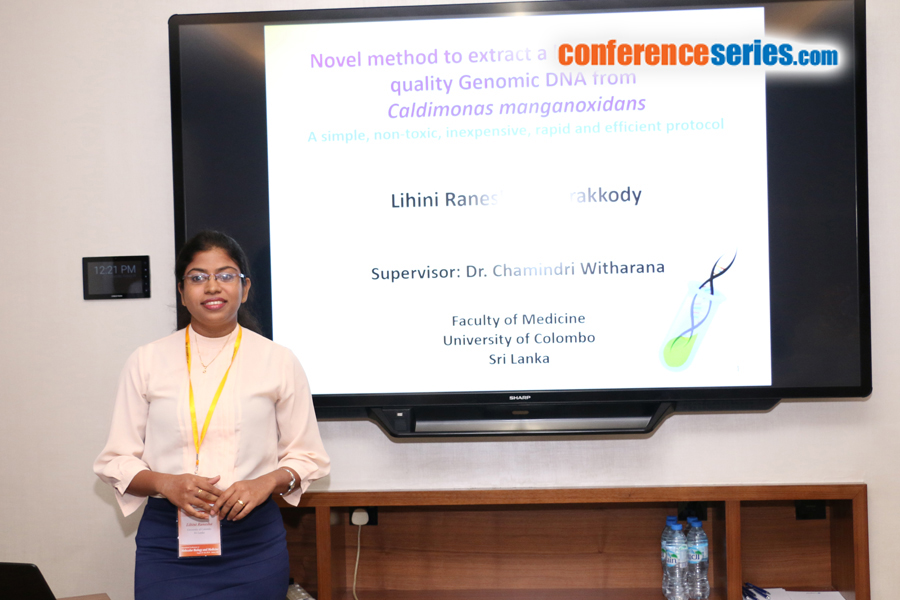
Lihini Ranesha Weerakkody
University of Colombo, Sri Lanka
Title: Novel method to extract a high yield of good quality genomic DNA from Caldimonas manganoxidans: A simple, non-toxic, inexpensive, rapid and efficient protocol
Biography
Biography: Lihini Ranesha Weerakkody
Abstract
Currently there are several protocols to extract bacterial genomic DNA based on different principles. However, most of these methods use hazardous organic solvents, including phenol and chloroform, whereas certain protocols use expensive enzymes including RNases and proteinases. This study was designed to introduce a simple, rapid, non-toxic, inexpensive and effective genomic DNA isolation procedure without using toxic chemicals and costly enzymes for Caldimonas manganoxidans; a Gram negative bacteria. Initially the bacterial cell pellet was re-suspended in TEN (Tris-HCl, EDTA, NaCl) and TENST buffer (Tris-HCl, EDTA, NaCl, SDS, Triton-X-100) and incubated. After that, saturated NaCl was added and centrifuged for protein precipitation. Then the supernatant was transferred and absolute ethanol was added. Finally, the tubes were centrifuged to precipitate genomic DNA. A modified salting-out method was also used to extract DNA from the same organism. The two methods were compared in terms of the quality and the quantity of DNA. The DNA yield was assessed by gel electrophoresis and the quality of DNA was verified by Polymerase Chain Reaction (PCR). The novel method showed better results with regard to the DNA yield and the quality of DNA. The novel method was less time-consuming compared to the other method. No inhibition was observed in subsequent PCR ampliï¬cations. The presented method is rapid, inexpensive and useful for routine DNA isolation from Gram negative bacteria such as Caldimonas. Quality and repeatability of the novel method were found to be adequate for subsequent molecular applications.


